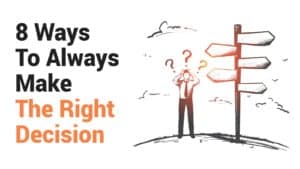Most of our parents raised us to suppress our emotions. They didn’t use those exact words, of course. It sounded more like, “Stop wearing your heart on your sleeve,” ” Suck it up, buttercup,” “Go to your room and stop crying” or “Just deal with it.”
We probably spent most of our childhood and at least half of our adulthood finding out that this method doesn’t work. Suppression is not managing emotions. It only leads to a long list of emotional triggers that cause us to lash out in unpredictable ways on unsuspecting, innocent, and potentially loving people in our lives. Being an adult includes recognizing these triggers and changing our reactions.
Today, we will review five ways to identify your emotional triggers and how to handle them.
Suppressed emotions lead to emotional triggers.
Emotional triggers can be anything that creates a seemingly irrational emotional response. Usually, those triggers stem from old wounds in childhood, traumatic experiences, new unhealed hurts, or even the lack of ability to deal with strong emotions.
Studies suggest that not being able to express your emotions makes the emotions stronger in your brain. A study performed at UCLA involving brain imaging of volunteers seeing moving images (an angry face) showed higher activity in the part of the brain that registers danger signals, called the amygdala.
Yet, interestingly enough, labeling the face as an angry face showed a lesser response in the amygdala but an increased response in the right ventrolateral prefrontal cortex. This portion of the prefrontal cortex is responsible for our ability to think in words about an emotion. There is some indication that it also may help decrease physical response and processing emotions as well.
This study carefully pointed out that being able to express emotions lessened the impact of feeling it in the brain. It allowed your brain to process it and decrease the typical fight-or-flight response related to strong feelings. The expression of emotion didn’t have to be spoken. Writing can also be useful.
In another study, psychologists reviewed multiple studies to determine the effect repressed emotions had on people. Suppressing emotions links to depression and other mental illness, a decline in emotional regulation and life challenge abilities, lessened cognitive abilities, and various physical ailments.
When one is less capable of regulating their emotions, they are more easily triggered.
Effects of not identifying your triggers
Learning to identify your emotional triggers is part of maturing and learning about yourself. Sometimes we can have triggers, and without real reflection, we have no idea where they stemmed from.
Triggers can affect your relationships with family, friends, your spouse, your children, your boss or co-workers, and even strangers. Depending upon your skill in handling the trigger when it occurs, this may make the difference in being seen as someone who can be promoted at your job, in how your children learn to cope with their emotions, and if your spouse understands why you just became angry.
In extreme cases, triggers physically harm people. Emotional triggers can lead to spousal abuse, child abuse, road rage, sexual abuse, and other forms of lashing out.
Identifying your emotional triggers
We create our own emotions; therefore, we have to learn to own them, to take responsibility for them. Part of that responsibility is recognizing when you are having reactions that aren’t serving a purpose but are hurting you, and possibly, those who love you. It can be tough to recognize your triggers if you have developed robust denial methods or have buried and turned on blinders regarding looking at your emotional behavior. Seeking the aid of a therapist can be very beneficial, especially in the beginning.
What physical reactions are you having?
Where we may have learned to suppress or repress our emotions, they need to be expressed somehow. Strong emotions without a label are dangerous to our brains. As a result, we will have physical fight or flight physiological responses:
- Increased heart rate and blood pressure
- Shaking or trembling
- Sweating
- Crying
- Extreme fatigue
- Weakness
- Lack of eye contact
- Inability to speak
- Nervous stomach
- Faster breathing
- Foggy thinking
What did someone say that triggered the physical response?
Your physical response is the first clue to your behavior. At this point, if you are able, remember what someone said and how you responded. Often, people say something with no evil intent. However, an assumed accusation or criticism, an exhale of tiredness, or pitch of the voice transforms what they said into a wrong interpretation.
Do you see a pattern in your emotional reactions?
Do you find yourself always responding to criticism? Does a loud voice make you cringe and feel afraid? Do you find yourself fighting back the tears when someone brings up an event in your childhood? When someone is late to pick you up, do you assume they forgot you or that you weren’t necessary? Do you get angry at your children for demanding your attention? Look for reactions you repeatedly have to daily social exchanges or loved ones.
Is there someone that always makes you feel uncomfortable, angry, insecure, jealous?
Do you find you always feel insecure around a specific class of people or a particular co-worker? Do authority figures automatically put you on edge, preparing for an attack? Or, do conversations around you regarding a sibling or parent set you on edge? Why is that? Question your reactions to them.
Do you find specific topics or events that make you defensive?
How do you handle criticism? Do you get defensive and start justifying your actions? Do you get angry and sarcastic about specific topics frequently? Perhaps you even find yourself putting others down to compensate for feeling inadequate around some issues?
Your normal reactions to the people and events that surround you lend clues to where your emotional insecurities lay. You can also find them in repeated feedback from employers, loved ones, significant others, and even in how strangers respond to you. You have to be willing to be open to seeing common threads in your life and looking at yourself and asking hard questions.
 How to handle emotional triggers
How to handle emotional triggers
Learning to identify emotional triggers is a huge step. You may only be able to deal with one at a time, or you may find that a few are interconnected. Either way, now that your eyes are open, how do you deal with the emotional trigger when it pops its head out?
- Being aware that you are responding to an emotional trigger is the first step. Without awareness, you react out of a sense of survival instead of responding to what someone is saying.
- Own your feelings. One of the worst habits we develop in dealing with emotions is to justify our reactions to whatever triggered us. Learning to acknowledge that you are reacting, examining your feelings, and not blaming it on the other person is another huge step. It’s easy to become so accustomed to telling people, “if you hadn’t yelled,” ” if only you had been on time,” “you made me feel like xxx.” No, we made ourselves feel a certain way, and we need to own that.
- Express what you felt during whatever exchange. Whether you share how you feel with a loved one, journal about it, or speak about it with a therapist, get how you felt out there without blame. ” I felt sad” or “I felt angry.”
- Identify the need that didn’t get met that is behind the emotional trigger. Most often, our emotional triggers are related to a need or expectation not being met. Some of those needs may be:
- Acceptance of who you are
- Love and affection
- Attention
- Freedom to do things
- Consistency and safety
- Fairness (especially between siblings)
- Acknowledgment of importance, attractiveness, ability, or intelligence.
 Final Thoughts on Handling Emotional Triggers
Final Thoughts on Handling Emotional Triggers
Emotional triggers can arise from deep-rooted from childhood, misunderstandings of certain events, or just strong emotional reactions to disappointments in life. Therefore, the key is to start deciding it is time to give those emotions a name so you can move on.
Often, emotional triggers have us responding as if we are still that hurt child or the insecure high school student. Whatever age we were during the event tends to be the level of maturity displayed in our response to the trigger. Our emotional maturity, at least for that trigger, stopped at that moment.
Part of being an adult means you have to teach that inner person to grow up. Use the five ways to identify your emotional triggers to show you how to handle them so your inner child or hurt person can heal and grow up to join you in being the mentally strong person you are. You will be amazed at how safe, secure, and happy you will feel when all the fragmented emotions of you are healed.

















